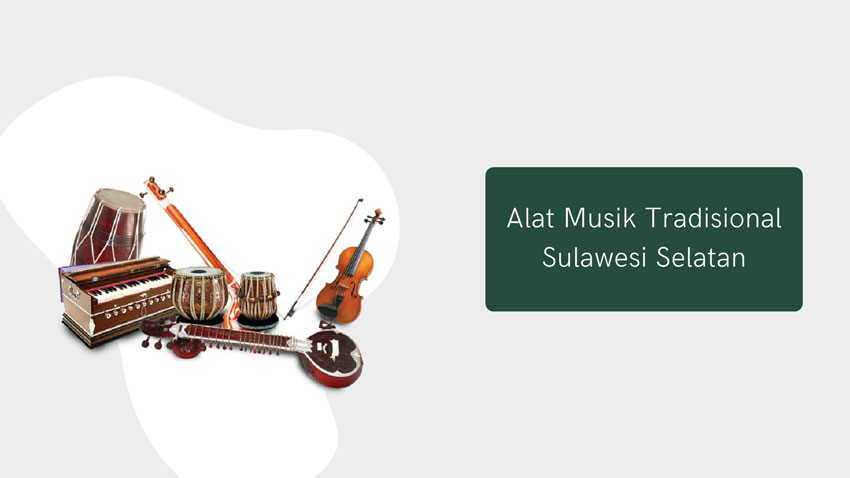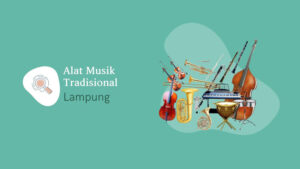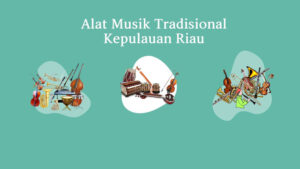
[ad_1]
South Sulawesi or commonly abbreviated as Sulsel is a province in Indonesia which is located in the southern part of Sulawesi with its capital city being Makassar. This province is known for its ethnic wealth which is quite a lot. One of the many cultures from the area is the traditional musical instruments of South Sulawesi.
Apart from having various types of tribes, the province of South Sulawesi has a well-known culture, namely Mappalili or commonly called Appalili. The name Appalili comes from the word palili which means to protect plants from trouble.
Names of Traditional Musical Instruments of South Sulawesi
The culture that is known from this province includes the traditional musical instruments of South Sulawesi. About the traditional musical instruments of South Sulawesi, it makes us know more about the kinds of culture and arts that exist in Indonesia. For more details, here is a review of South Sulawesi musical instruments that you need to recognize.
1. Alosu

Making this traditional musical instrument comes from wood and textiles. The sound it made came from several small rocks stuffed into a bamboo tube. The tube was wrapped in red and white cloth with one end shaped like a chicken’s head.
Alosu or you can say Sessungriu includes the tools used in the Alusu dance, the word Lalusu itself comes from the word lao-lisu which means back and forth. It is named like that because when dancing, the instrument is shaken left and right or swung forward and sideways to produce a sound.
2. Puik-Puik

This traditional musical instrument characteristic of South Sulawesi is a trumpet-like instrument. This instrument includes musical instruments whose presence is almost extinct.
The form and technique of playing the Puik-Puik instrument are similar to several musical instruments in other regions of Indonesia, such as the serunai in Sumatra, the Sronen in East Java, and the Tarompet in West Java. And it’s different, only at the base and the carvings on the body of this instrument.
The base of this Puik-Puik musical instrument is made of sheet metal, and the pipe that produces the sound comes from pieces of palm leaves that are blown. Usually, this instrument has two palm leaves, one of which serves as a backup if the other leaves are damaged.
3. Bulo Drum

This traditional musical instrument has a smaller inclined size when compared to the usual drums in Java, but the Bulo drum instrument has a longer size. The two parts of this musical instrument are not the same, which in one part is bigger than the other part.
To play this sponge drum instrument by being hit on a large part using wood, while on a smaller part it is hit using your bare hands or directly.
Therefore, you need to see where to place the Bulo Gendang. If you use your hands normally, position the larger part of the drum on the right side, and vice versa if you use left-handed hands.
4. Rub

The work of this traditional musical instrument comes from wood and animal skins. This stringed musical instrument is still of the same type as the fiddle with two strings and has a shape similar to a heart or taro leaves accompanied by a string stick.
The playing of this stringed instrument is performed to accompany the poems “Sinirik”, which tells a story about past history which contains advice or advice. In the past, this string instrument was only played by family groups, but now it has become a folk music game.
5. Jalappas

The making of this traditional South Sulawesi musical instrument comes from brass and has a shape like a cymbal. To play this jalappa musical instrument, it is by striking it between two Jalappas.
This Jalappa musical instrument is like a button shape, because of that Jalappa is said to be a button with a large size. Generally, the jalappa musical instrument is played as a form of music that is played during traditional ceremonies such as weddings, circumcisions and kickoffs and as offerings to the gods ‘sewwae’.
6. Beans

The name Kacaping is called from Bugis, while Kecapi is called from Makassar area. This traditional musical instrument is played singly or individually or can also be grouped in the form of an ensemble and is played simultaneously with other traditional musical instruments such as drums, flutes, gongs, violins, Mandaliong, Katto-Katto and so on.
Sometimes the Kacaping instrument is accompanied by a male or female vocalist and is played as dance accompaniment.
7. Pa’pompang
The work of this traditional musical instrument comes from Toraja bamboo. This pa’pompang musical instrument is still a type of wind instrument and will produce a sound as high as two and a half octaves on the sound scale. Pa’pompang can be played by various people and groups, from small children to adults as well.
Apart from being a musical accompaniment at church services, Pa’pompang is often played at special events of the Toraja commune, such as weddings and commemorations of holidays in several areas.
8. Taliindo

The construction of this traditional musical instrument comes from wood, coconut shells, and strings. Which coconut shell is useful for resonators. The talindo musical instrument itself is a single-stringed sitar type instrument.
Talido musical instruments are played individually and are played at the time after the farmers celebrate the harvest party and free time accompaniment for teenagers.
9. Ana Worm

The workmanship of this traditional musical instrument comes from iron with an arrow-like shape. To play an ana bancing instrument, it is by striking it between the two ana bancing.
This traditional musical instrument is often played to accompany the Bissu dance. The dance is performed at weddings, deaths and the inauguration of new kings, when there is an epidemic of disease and as a sign when it is time to start planting rice.
10. Flute Lembang

This traditional musical instrument is played in the work of Rambu Tuka’ (traditional ceremonies of rice harvest, marriage, thanksgiving and so on) as well as Aluk Rampe Matampu and Rambu Solo’ (traditional ceremonies of death).
To play this traditional musical instrument is to blow or almost the same as the usual flute. However, the difference is that the Lembang Suling has a very large size or a length of 50 to 100 cm and a diameter of 2 cm with 8 sound holes.
Also Read: Traditional Musical Instruments of North Sulawesi
Closing
Those are several types of traditional musical instruments typical of South Sulawesi, some of which still exist today. It is appropriate for the cultural heritage of several ancestors to be guarded by our younger generations. So that its presence is still valuable and so that it does not disappear into the times.

